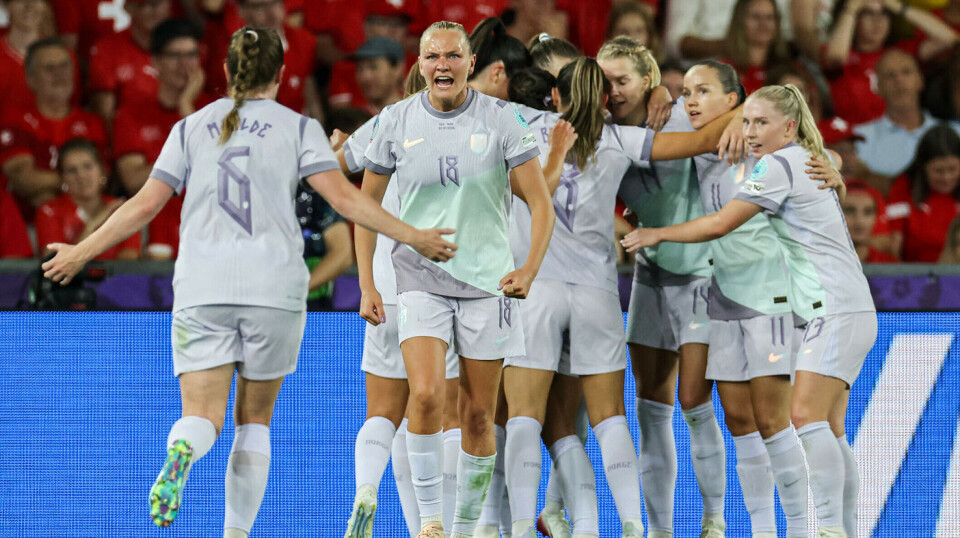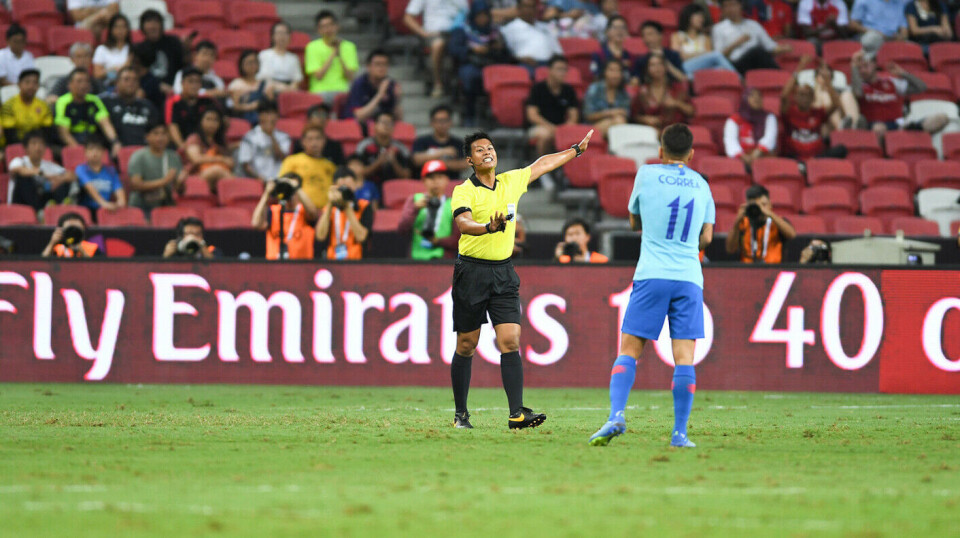THIS CONTENT IS BROUGHT TO YOU BY The Norwegian School of Sport Sciences - read more
Football expert wants to change how people watch football at home
Researchers urge us to look away from the ball and pay attention to something entirely different.

Think about everything that happens during a football match.
Not just the chances, passes, or goals, but also the body language of the 22 players on the pitch.
During a single match, a team can produce between 2,000 and 3,000 body language signals.

Top clubs are very interested
That’s what researchers from the Norwegian School of Sport Sciences (NIH) discovered after manually tracking and recording expressions from 33 matches during the 2022 World Cup in Qatar.
“Top clubs are very interested in this and see it as one of those small margins that can lead to victory,” says Professor Geir Jordet.
He regularly visits the biggest clubs in Europe to talk about the research NIH has conducted, including on body language.
Arsenal, Chelsea, and Bayern Munich are among the clubs he has worked with.
He explains that a single Premier League match can generate millions of data points on tactics and physical performance, but the psychological aspect has been almost completely overlooked.
“We can give them insights into what their players are thinking, feeling, and what mental state they’re in during the day. That’s obviously very interesting for them,” he says.
Manually recorded 18,000 expressions from the World Cup
These findings could make future matches more engaging for fans, regardless of how into football they are.

In the project, researcher Ingrid Lian has studied the body language of elite football players in several different ways:
- Followed eight elite players from top European leagues.
- Manually recorded and analysed 18,000 different body language signals from 32 matches in the Qatar World Cup. The team had access to camera angles that the public don’t see, including close-ups of individual players.
- Interviewed elite players about how they perceive their own body language, as well as their teammates' and their opponents' body language.

The researchers have categorised the body language as either tactical or emotional.
Tactical expressions include things like influencing the referee, asking for the ball, directing teammates, and positioning.
Emotional expressions show how players feel – like applauding a teammate’s effort or throwing their arms up in frustration when a pass doesn’t reach them.
“We label them as positive or negative expressions, but that doesn’t necessarily mean negative expressions are bad for performance. They can be constructive or destructive depending on context, relationships, and the flow of the game,” Lian explains.
Body language is contagious
Lian shares a concrete example of positive body language during one of Norway’s biggest football moments: the 3 - 0 win over Italy at Ullevaal in June 2025.
“One example is when Martin Ødegaard stopped the ball after Kristoffer Ajer made a fantastic tackle and applauded with his hands above his head. He clearly showed he appreciated his teammate’s effort,” says Lian.
Lian attended the match with Jordet, her research supervisor.
“Martin knows everyone’s watching him because he has the ball, so the message becomes even clearer. It’s a way to communicate more effectively and intensely,” says Jordet.
He believes it was one of the small margins that helped Norway win.
“It’s one of many. What’s also interesting is how these things spread. When someone starts communicating with intensity, energy, and positivity, we can see a kind of ripple effect that boosts the energy of those making the effort on the pitch. And the opposite effect for Italy,” he says.
More emotional expressions in the second half
Their analysis showed that players used more tactical expressions early in the match, but that these decreased as the game went on.
Emotional expressions, on the other hand, increased.
“That might be because players get tired, and it takes more effort to direct the team. Emotional expressions seem to come more easily later in the game,” says Lian.
They also found big differences depending on a player’s position.
“Centre-backs and midfielders show more tactical body language than wingers and strikers. They’re more central on the pitch and have more opportunities to be tactical,” she says.
A new dimension to the match
Professor Jordet is widely known as the world’s leading expert on penalty shootouts.
Last year, he published a book specifically about those intense, decisive moments in knockout matches.
One of the goals of this research is to change how people watch football at home.
“That’s actually one of our goals. This research highlights subtle behaviours and body language that fans can spot, which can make watching a match more enjoyable. It adds a new layer that people haven’t been aware of before,” says Jordet.
The two researchers have some tips for making football even more interesting, both for fans and casual viewers.
“Watch how teammates react when mistakes are made. How do they communicate in good times and bad when they have the upper hand in the match? And how do they respond to instructions from others?” suggests Ingrid Lian.
Look away from the ball
Jordet follows up with something that might surprise and challenge many viewers.
“You need to look away from the ball. The ball is a magnet, but try to ignore it for a bit. Keep it in your peripheral vision and focus on what’s happening around it instead. Those who might be potential receivers, or those reacting to what just happened. That’s where the magic starts,” he says.
He firmly believes this is something even viewers with no prior knowledge of football can enjoy.
“When I say magic, I mean it. This is a whole new world and a new way of watching football. There are around 5,000 body language expressions per match that reveal players’ intentions, motivations, emotions, and social dynamics,” he says, adding:
“These things aren’t really about football, they’re about people. And about how we behave individually and collectively when performing at a high level.”
Listen to the Norwegian podcast episode below:
———
Read the Norwegian version of this article on forskning.no

This content is paid for and presented by The Norwegian School of Sport Sciences
This content is created by The Norwegian School of Sport Sciences' communication staff, who use this platform to communicate science and share results from research with the public. The Norwegian School of Sport Sciences is one of more than 80 owners of ScienceNorway.no. Read more here.
More content from The Norwegian School of Sport Sciences:
-
Kristine suffered permanent brain damage at 22: "Life can still be good even if you don’t fully recover"
-
Para sports: "The sports community was my absolute saving grace"
-
Cancer survivor Monica trained for five months: The results are remarkable
-
What you should know about the syndrome affecting many young athletes
-
New findings on how athletes make the best decisions
-
Is the body just as strong after seven days of fasting? The findings surprised researchers




































